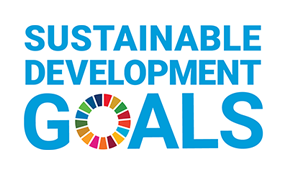At a GlanceReport 3—Hydrogen’s Potential to Reduce Greenhouse Gas Emissions
Why we did this audit
- The potential significant contribution of hydrogen to meeting Canada's emission reduction goals. In addition, it relates to Goal 9 (Industry, Innovation and Infrastructure) and Goal 13 (Climate Action) of the United Nations' Sustainable Development Goals. If the 2 departments do not appropriately project hydrogen's impact on reducing emissions, then there is a risk that Canada will not achieve its emissions reduction targets.
- Canada's greenhouse gas emissions have increased significantly since the United Nations Framework Convention on Climate Change was signed in 1992, making it the worst performer of all G7 nations since that time. Sound modelling is needed to change the trajectory of Canada's greenhouse gas emissions.
Our findings
- Natural Resources Canada overestimated hydrogen's potential to reduce greenhouse gas emissions.
- Environment and Climate Change Canada relied on policies not yet announced to justify that its plan was sufficient to meet the original 2030 target.
- We found the 2 departments used unrealistic assumptions for modelling the potential of hydrogen to reduce greenhouse gas emissions.
- We found that Natural Resources Canada's modelling did not factor in how the supply of hydrogen and associated costs would be deployed to meet the projected demand.
Key facts and figures
- The transformative scenario developed by Natural Resources Canada projected that hydrogen could represent up to 15% of the emission reductions needed to meet the 2030 target. In contrast to this, we found that one of Natural Resources Canada's incremental demand reports projected that in 2030, hydrogen will contribute only 0.5% of the 2030 target and 5.5% of the 2040 target. The department did not find this estimation compelling and chose to use more aspirational numbers in the Hydrogen Strategy for Canada modelling.
- Canada is the world's fourth-largest producer of natural gas, generating 16.6 billion cubic feet per day. It is the sixth largest exporter of natural gas. Natural gas plays a pivotal role in Canada's energy system, providing 35.7% of energy demand.
Our recommendations
- Natural Resources Canada should perform a comprehensive bottom-up modelling for the use of hydrogen. This modelling should account for the following:
- emission reduction efficiencies by sector (cost of emission reductions per megatonne of carbon dioxide equivalent)
- substitutional fuels (for example, biofuel, electrification, credit systems)
- feasible deployment of technologies and supporting infrastructure.
- To improve consistency across departments, Environment and Climate Change Canada and other federal departments should adopt a standard framework to estimate emission impacts of proposed policies, clean technologies, and fuels.



Hydrogen has the potential to make a significant contribution to meeting Canada's emission reduction goals. This report relates to Goal 9 (Industry, Innovation and Infrastructure) and Goal 13 (Climate Action) of the United Nations' Sustainable Development Goals. If the 2 departments do not appropriately project hydrogen's impact on reducing emissions, then there is a risk that Canada will not achieve its emissions reduction targets.
Visit our Sustainable Development page to learn more about sustainable development and the Office of the Auditor General of CanadaOAG.
Related information
| Entities | |
|---|---|
| Completion date | 17 February 2022 |
| Tabling date | 26 April 2022 |
| Related audits |
|